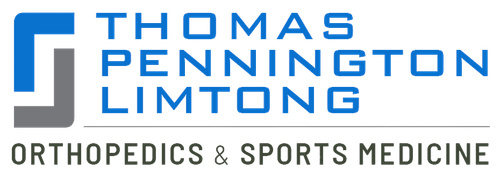Bursitis
 Diagnosis of Bursitis is typically based on your medical history and physical examination. Your orthopedic surgeon may also ask you to get some tests done. These tests include:
Diagnosis of Bursitis is typically based on your medical history and physical examination. Your orthopedic surgeon may also ask you to get some tests done. These tests include:
- MRI or x-ray imaging: imaging tests are vital to diagnosing bursitis. Since x-ray images are not intuitive, they are less preferred. Typically, MRI or Ultrasonic tests will be prescribed by your doctor.
- Laboratory tests: blood tests will help the surgeon assess your disorder better. In addition to blood tests, fluid from the inflamed bursa is sent for lab analysis to understand the cause better.
Board certified orthopedic surgeons Dr. Steven C. Thomas and Dr. Gregory T. Bigler provide orthopedic treatments to patients in Las Vegas, Nevada and greater Pahrump, Bullhead City, Lake Havasu, and Mesquite, NV.
Treatments
Bursitis can be treated either through a non-surgical medical procedure or by means of orthopedic surgery. Non-surgical methods include steroid injections and antibiotics.
Steroids
To stop the inflammation, the surgeon may inject steroids into the affected area. Steroids effectively block prostaglandin (this causes inflammation). The dosage is monitored carefully as excess steroid injection will shoot a patient’s blood pressure.
Antibiotics
If the fluid analysis tests positive for bacterial infection, antibiotics will be prescribed. These can be either administered orally or intravenously, depending on the severity of the condition.
Surgical procedure
Surgical procedures for treating bursitis are relatively rare. If shoulder bursitis becomes chronic, it is better to have surgically treated. The kind of surgery will depend on the severity of the issue and the underlying cause of bursitis. There are 3 recommended surgical procedures:
Bursectomy
Bursectomy is a procedure that surgically removes the inflamed bursa. This is usually done with a single incision, or arthroscopic, which requires 2 or 3 incisions.
Once the inflamed bursa is removed, a new one is replaced. This new bursa will be less prone to develop into bursitis.
Acromioplasty
Acromioplasty, also known as, subacromial decompression is performed by removing the acromion on a patient’s shoulder blade. By removing this bone tissue, more space is available for the shoulder’s soft tissues which include rotator cuff, tendons, or subacromial bursa. More space for these soft tissues will make your joints less prone to inflammation or irritation.
Acromioplasty is recommended if the acromion is hook-shaped instead of being flat. A curved acromion is more prone to impingement, thus bursitis.
Surgical repairing and reattachment of the tendon
If shoulder bursitis is caused by a damaged rotator cuff muscle or tendon, your surgeon will most likely recommend a reattachment. The damaged tendon is often reattached to the humeral head after repairing. Experts believe that the majority of cases for shoulder bursitis is because of a tear in the rotator cuff muscle.
Bursectomy may be performed in conjunction with subacromial decompression. But in many cases, bursectomy alone is sufficient and may prove to be as effective as both bursectomy and subacromial compression combined.
Board certified orthopedic surgeons at Thomas & Bigler Knee & Shoulder Institute provide orthopedic treatments to patients in Las Vegas, Nevada and greater Pahrump, Bullhead City, Lake Havasu, and Mesquite, NV.
Contact Board Certified Surgeons Dr. Bigler or Dr. Thomas at the Knee and Shoulder Institute in Las Vegas, NV to Schedule an Appointment:
If you would like to schedule an appointment or learn more about the Knee and Shoulder Institute procedures & treatments performed by Las Vegas, Nevada board-certified surgeons Steven C. Thomas, MD and Gregory T. Bigler, MD. Contact the office today click here.
Serving patients from and around greater Las Vegas, Lake Havasu, Bullhead City, Mesquite, Pahrump, Nevada.
